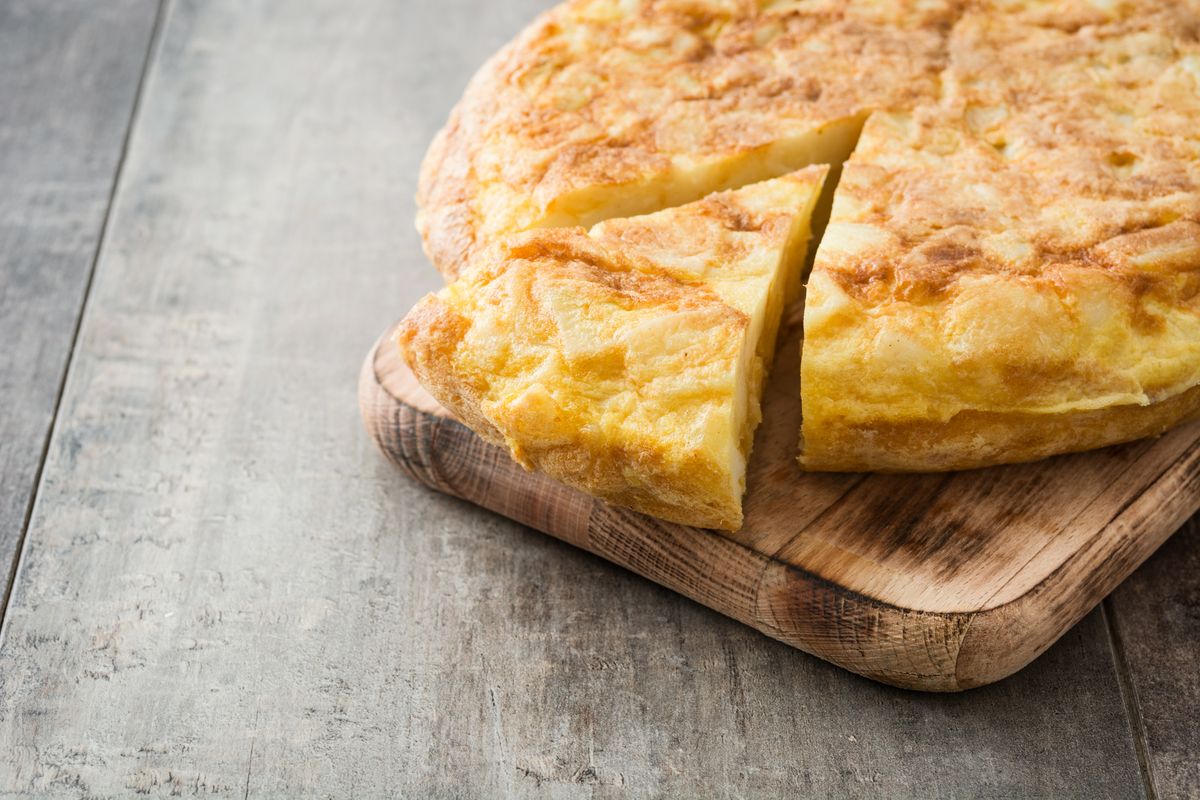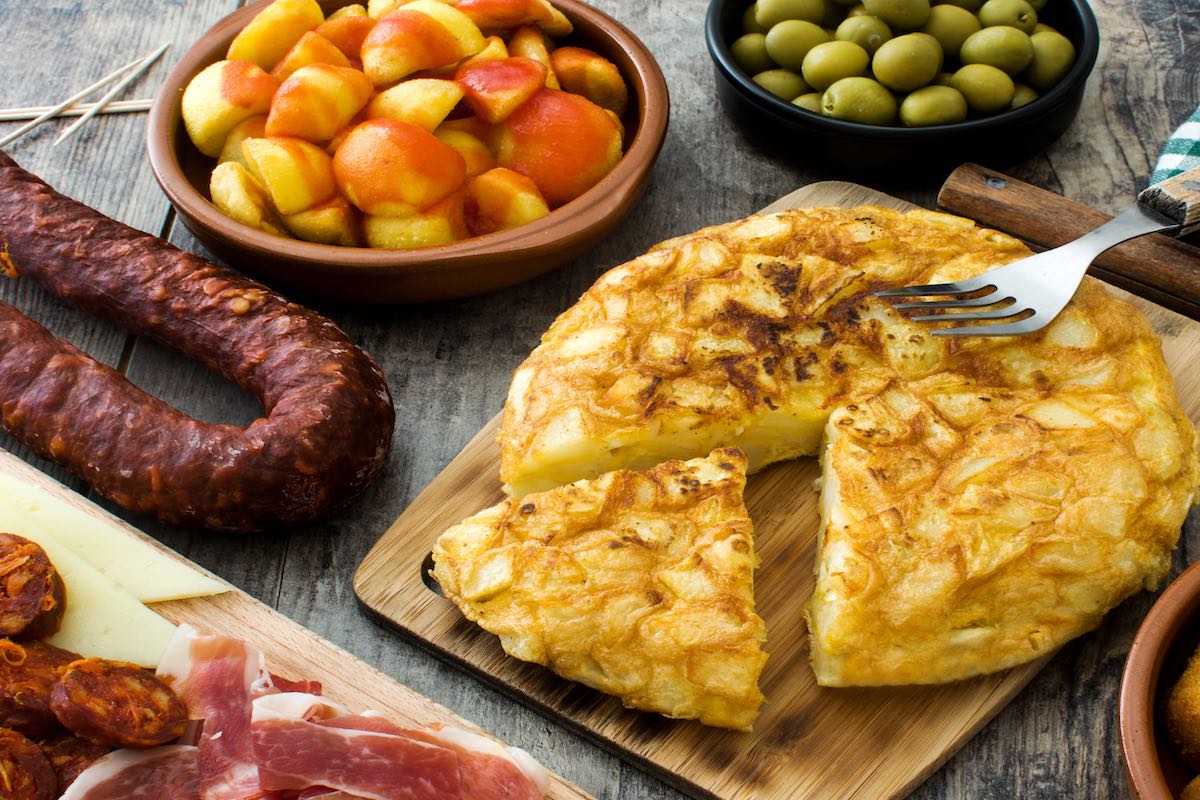Recipes
Raphaned


Imagine a sort of omelette with potatoes, horseradish and pecorino, cooked in a pan, in the oven or on the grill and you will have horseradish.
Rafanata is a typical dish of Basilicata which owes its name to the main ingredient: horseradish . This root, once considered the poor man's truffle, is widely used in the cuisine of the area. However, it is enough to leave the regional borders to lose track of this ingredient and all the recipes in which it is the protagonist.
Wanting to describe the radish, we could say that it is a sort of omelette with lots of eggs, pecorino , grated horseradish and potatoes, originally cooked on the grill, placing charcoal both under and above the pan, and today prepared in the oven or in a pan. Certainly this technique is more immediate, however part of the characteristic smoky flavor of the recipe is lost.

How to prepare horseradish with the original recipe
- First, boil the potatoes in plenty of lightly salted water. The time varies according to the size of the potatoes: to test their doneness, pierce them with the tines of a fork until they are tender. It will take 30 to 50 minutes.
- Then drain them and mash them immediately with a fork or potato masher.
- Also peel the horseradish and grate it with a grater with small holes.
- Separately, in a large bowl, beat the eggs with the pecorino , a pinch of salt and pepper .
- Add the mashed potatoes and grated horseradish and mix well.
- Oil a pan and pour the omelette.
- Cook over medium heat for 10 minutes or until the edges begin to peel away.
- At this point, using a lid, turn it over and continue cooking on the other side.
- Serve the horseradish piping hot.
To prepare the baked horseradish the procedure is similar. However, pour the eggs with the other ingredients into a baking tray lined with baking paper and cook at 200°C for 30 minutes.
Variations of the horseradish
Horseradish can also be prepared with raw potatoes , added grated to the eggs, or by adding bread crumbs to the mixture, to make it even more substantial as seen in this video .
At the end of the carnival period, the rafanata is enriched with typical local cured meats such as soppressata. Furthermore, with the same mixture it is possible to form meatballs to fry.
However, be careful not to confuse it with the horseradish from Castelsaraceno : in this case we will have a PAT (Traditional Agri-Food Product) dish of underwired macaroni cooked on the grill and seasoned with a meat sauce, horseradish and pecorino.
Conservation
The horseradish can be kept in the refrigerator for 2-3 days, well covered in cling film. You can consume it after heating it in a pan or in the oven or at room temperature.
Origin and history
Horseradish is, at least apparently, an unusual ingredient for Lucanian cuisine. Associated mostly with typical recipes of Northern Italy and Northern Europe, it actually arrived in Basilicata together with the Normans around the 11th century. Here it found fertile ground (in every sense): the population in fact soon discovered that it was not only simple to grow, but also very nutritious. The name of the recipe is therefore due to rustic horseradish ( Amoracia rusticana ).
But what is the history of horseradish? It is difficult to establish with certainty when the dish was prepared for the first time, as it is however a recipe made with simple and commonly used ingredients. It's easier to establish where. In fact, the rafanata originates from Aliano , a town of 1000 inhabitants in the province of Matera. From there it then spread throughout the Val d'Agri and the high hills of Matera.
Typical of Carnival , it is prepared from Saint Anthony's day, January 17th, until Shrove Tuesday. Especially in this period, i.e. the last days before the Lenten fast begins , the horseradish is enriched with typical local cured meats such as soppressata or pezzente, added in cubes.
The mixture of eggs, potatoes and cheese was cooked in a terracotta pan well greased with lard and placed on the grill. Thanks to the foc sotto and foc sop technique (i.e. embers under and above the lid) a sort of oven was created which gave the horseradish not only its characteristic consistency but also a pleasant smoky aroma.
Traditionally, the cheese used is canestrato di Moliterno PGI , a fine cheese obtained from sheep's and goat's milk. Difficult to find outside the regional borders, it can be replaced with pecorino.
Today the rafanata is part of the triptych of the Aliano Carnival together with frzzul and sauzizz i.e. frizzuli (Lucan style fusilli prepared with ferretto) and sausage. In recent times, this recipe was the protagonist of an episode of Dinner Club, with Carlo Cracco .
Riproduzione riservata © - WT












